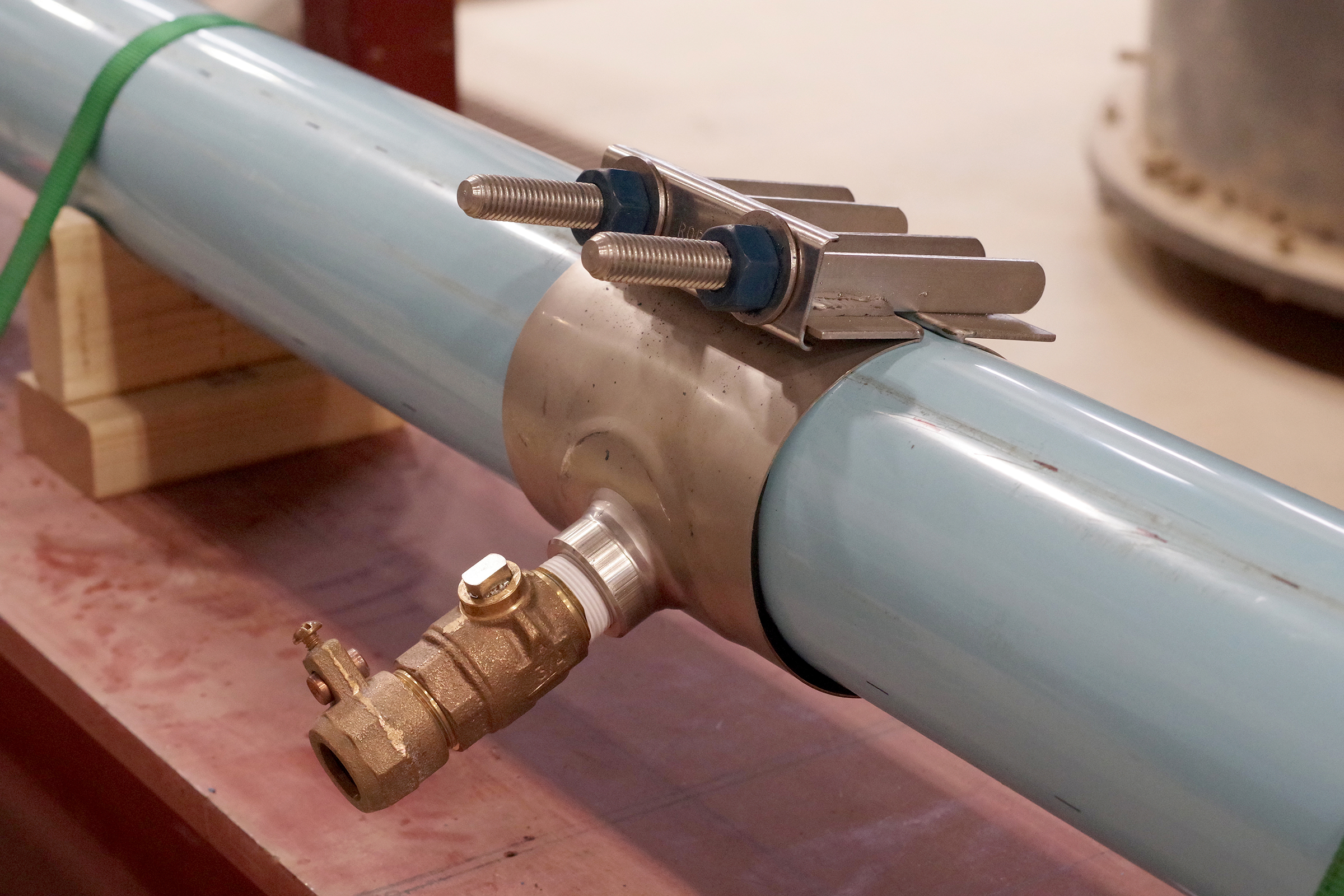Collaboration with local researchers will improve the resilience of buried infrastructure

A recent collaboration between the Queen’s University GeoEngineering Laboratory and Utilities Kingston’s water system operations group will help address the impacts of climate change and human activities on buried infrastructure.
Our water system operators visited the lab in November to supply materials and connect two water service connections to a fusible PVC watermain pipe. This setup is typical of that used for supplying drinking water on many residential streets.
They completed a water tap – essentially tapping a connector and valve between the service connection and the watermain (shown at right).
The work contributes to a project that will further understanding of the forces that develop in pipelines when they are subjected to ground movement. This could be from sources such as slope movement, deep excavation for building foundations and tunnels, or differential soil settlement, which can occur when the ground freezes in the winter and thaws in the spring.
The project also investigates how service connections behave when a pipe gets pulled through the soil (for example, due to ground movement) and how the service connections may act as anchors along the watermain, resisting this movement and the effect that would have on the resilience of the pipe network.
The pipe will be buried in a test pit at the GeoEngineering Laboratory and pulled through the soil using a hydraulic actuator (i.e., a piston that can be used to apply force). While the pipe is being pulled, researchers will be able to observe the behaviour of the buried pipe using novel fibre optic instrumentation. Sensors measure displacements and forces along the pipe, providing insights into pipe performance. The findings will be used by the research team to improve pipe design for resilience.
Thank you to water operators Pete Campbell and Trevor Corkey for contributing to this local research! We look forward to continued collaboration with the Queen’s University GeoEngineering Laboratory team with the goal of developing and strengthening our community’s buried infrastructure.
About the Queen’s University GeoEngineering Laboratory
The state-of-the-art facilities at the Queen’s University GeoEngineering Laboratory enable large-scale and realistic testing to advance research on a variety of geotechnical engineering scenarios. The facility, located at 950 Johnson Street, is part of the Department of Civil Engineering at Queen’s, and allows graduate and undergraduate students to contribute to the continued development in culvert, sewer, trenchless technologies and much more.